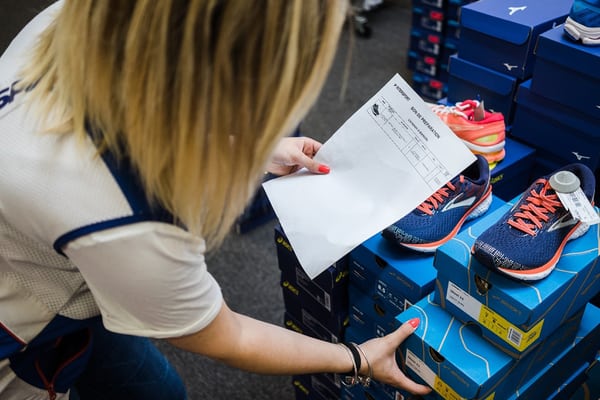INTERSPORT, one of the world’s largest sports retailers, has reduced out of stocks and boosted online revenues by 200% through radical stock unification process as it adapts its local franchise model to the online world.
Founded in 1968, INTERSPORT saw retail sales of €11.9bn in 2019, through some 6,000 affiliated stores in 57 countries. However, each INTERSPORT store is independently owned and run, so it can offer the best advice, guidance and value for its products and services with an understanding of the local customer and community in mind.
Due to its franchise business model, rather than holding the majority of its stock in a central, omnichannel warehouse, INTERSPORT prioritised keeping stock closer it customers, meaning product was available at a local level, but there was no single national stock pool from which online orders could be taken.
So, whilst INTERSPORT could provide the quickest and most accurate solution that met the customers’ needs regionally, it was missing out on potential sales, which were showing as out of stocks at national level on its website.
The sportswear brand recognised the need to continue its digital transformation by enabling each store to sell its products direct on the ecommerce website, in order to offer a wider range and a greater amount of stock.
Partnering with OneStock to implement its modern and agile OMS, INTERSPORT was able to aggregate all stock across the entire store network, unifying it on a single, integrated platform, which meant the single stock pool could be made available on the website, widening of the online product range and improving the availability of stock across its sales channels. The unification of stock now allows the brand to offer approximately 90% of its product catalogue with the option of home delivery.
At the same time, the OneStock solution helped INTERSPORT to increase the depth of stock available. This meant that inventory for sale online wasn’t just made up of stock in the warehouse but included available products in both the warehouse and the stores; giving staff and customers a true, real-time single view of stock. As a result, the number of sizes of a particular item or the number of products in a particular size increased, preventing online stockouts.
Thanks to a unified and more accurate overview of its total global stock levels, INTERSPORT was able to implement ‘Ship from Store’ capabilities through the OMS. The order orchestration rules, customised for INTERSPORT, prioritised fulfilment from the store linked to a customer’s online loyalty account, to provide a seamless omnichannel experience to shoppers, while increasing INTERSPORT’s sales opportunities and improving operational costs associated with fulfilment.
Today, two thirds of orders are now shipped from stores, and online turnover is experiencing significant growth, with ecommerce revenues up 200%.
Philippe Muhr, Director of web to store / e-commerce & e-CRM at INTERSPORT, explains: “Only 9 months after its implementation, our stores have truly adopted the OneStock OMS. The first results are very promising, with a 200% increase in our online turnover. Ship from Store complements our phygital strategy and improves the customer journey.”
Matthieu Pellet, Chief Digital Officer at INTERSPORT, also added: “OneStock’s Ship from Store solution enables us to accelerate the digital transformation of our brand, turning it into a fully ‘phygital’ company.”
The ‘Ship From Store’ capabilities implemented by OneStock for INTERSPORT, which recently won the Best Connected Retail Solution 2021 in the EHI’s Retail Technology Europe Awards (RETA) awards, has already been piloted in more than 100 European stores. INTERSPORT aims to roll out to further stores in 2021.
Romulus Grigoras, Founder and CEO at OneStock, adds: “By creating a true single stock pool, INTERSPORT was able to open up their order fulfilment capabilities, taking pressure off the warehouse and galvanising the capabilities of in-store network as distribution centres which allowed its bricks-and-mortar estate to serve omnichannel sales. This resulted not only in improving customer experience – meaning conversion-costing out-of-stocks were reduced – but, because more stock was available for sale, ecommerce revenues were also bolstered.”









